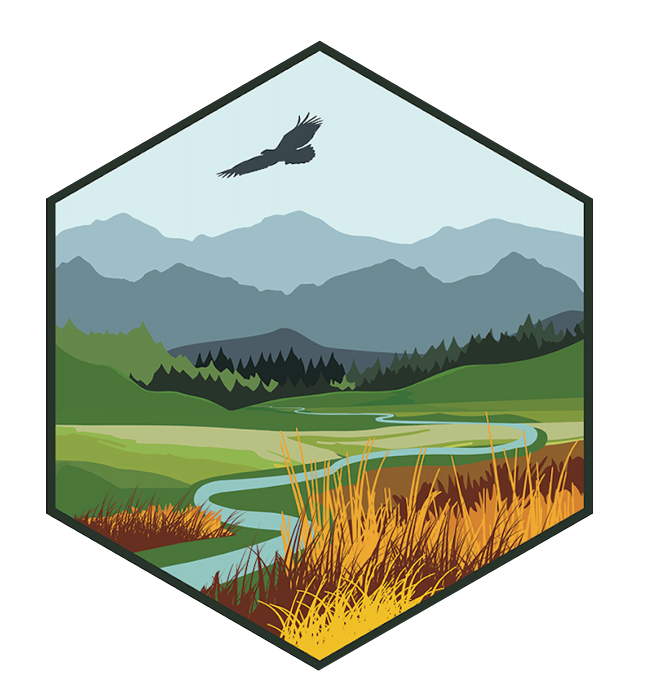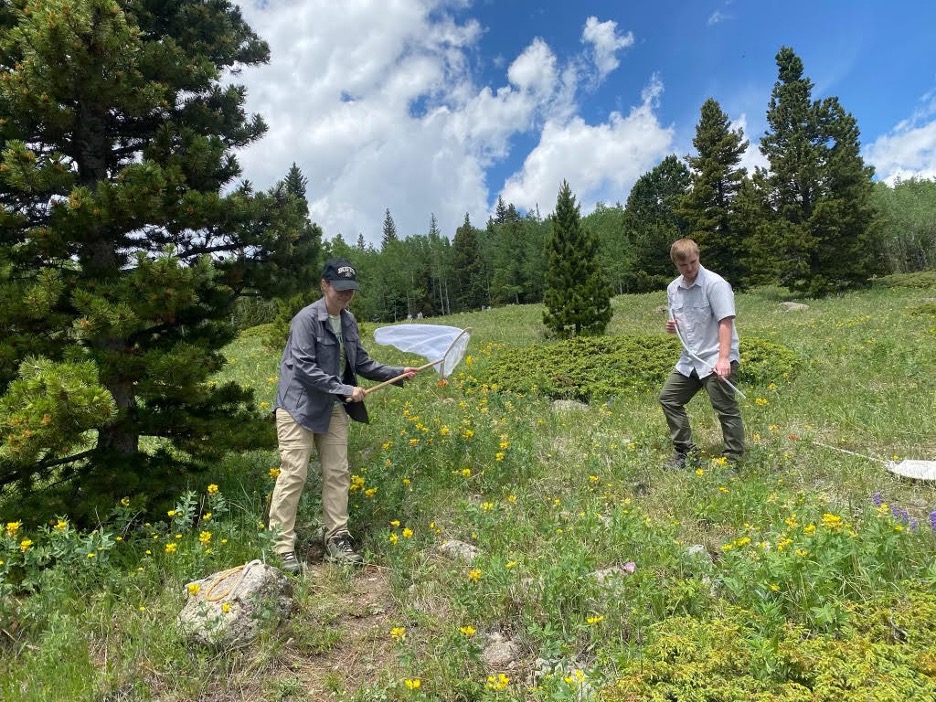Exploring Elk Meadow: A Journey into Day and Night Ecological Research
by undergraduate research assistant, Zakori Blackwell
At the end of May, I stepped into the heart of Elk Meadow for the very first time. Located high in the mountains at University of Colorado Boulder’s Mountain Research Station, this alpine meadow offered a glimpse into the world of ecological research. Despite the lingering snow, the first buttercups of the season made their appearance—a promising sign of the flowers yet to come. The beautiful and peaceful surroundings provided a perfect backdrop for our research. Each week different plant species emerged, while others transitioned from flower to fruit.
Dr. Resasco’s Important Work
Dr. Julian Resasco, a dedicated researcher who has been studying Elk Meadow since 2015, has focused on six marked plots within the meadow. Every summer, Dr. Resasco and his team (including Dr. Leana Zoller) head to the meadow weekly, with a backpack full of field equipment, water, and sunscreen. Their mission? To uncover how climate change impacts plant-pollinator interactions. Plant-pollinator interactions are like a team effort where plants and pollinators work together: the pollinators get a meal, and the plants get help with making new plants. Dr. Resasco’s research emphasizes the importance of generalist species—those that are most common in the meadow but often overlooked compared to their rarer counterparts.
A Day in the Field
Our research days began with a carefully organized routine. We randomized which plots we would observe first and assigned team members to different plots. At each plot, we used a Kestrel device to record data, including time, temperature (°C), relative humidity, and maximum wind speed. Next, we counted the number of blooms for each flower species in the plot. This step helps us track changes in plant life over time. Finally, we conducted a 15-minute survey to observe and collect pollinators visiting the flowers using a suction device called an aspirator. In simple terms, we suck pollinators up through a tube and place them in labeled vials. Dr. Resasco and Dr. Zoller logged the data onto data sheets for later analysis.
Exploring the Night
While daytime fieldwork formed the core of my experience, I also explored Elk Meadow after dark. Janelle Paul, a former researcher in Dr. Resasco’s lab, wanted to study nighttime pollinators, particularly moths. Staying in cozy cabins at the Mountain Research Station, we hiked into the meadow as darkness fell around 8:30 PM. We set up white sheets and large blacklights to capture moths landing over a 15-minute period. We also conducted two additional 15-minute intervals, using white and red lights to observe moths landing on flowers in the plots.
Reflecting on the Experience
Spending time at Elk Meadow deepened my appreciation for ecological research. Observing Dr. Julian Resasco, Dr. Leana Zoller, and their team’s dedication firsthand and participating in their work emphasized the importance of understanding how climate change affects plant-pollinator interactions. I came to value the detailed observations and data collection crucial for uncovering the mysteries of natural systems. This experience reinforced my passion for research and my commitment to contributing to the field of biology. Whether under the sunlight or stars, Elk Meadow reveals the beauty of alpine ecosystems and the dedication of those who strive to understand and protect them.
About the Author
Zakori Blackwell is a Cell & Molecular Biology major at Northeastern State University, Oklahoma. Some of his interests include botany, plant pathology, and environmental management.


